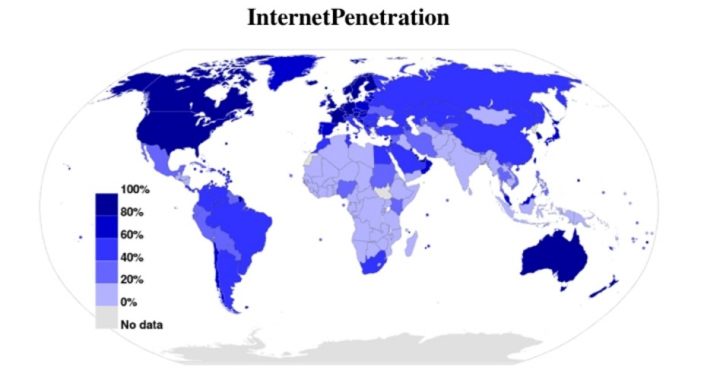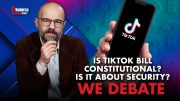
President Obama is committed to closing what he calls the “digital divide” between those who have high-speed Internet in their homes and those who don’t, according to the White House website. And he doesn’t mind overstepping his constitutional authority to do it, either.
While listing a convoluted blur of statistics, the White House website claims that “one in four doesn’t have [access to Internet service] at home.” So, in a move that will dwarf the “ObamaPhone” program, Uncle Sam is going to “bring high-speed broadband internet to low-income housing in 27 cities and one Native American tribal community.” And that’s just the beginning.
By the time the program is in full swing, the goal is for it “to connect 99 percent of American students to high-speed broadband in their classrooms” within the next three to five years through a program known as ConnectED. President Obama also promises — without providing much in the way of details — to “ensure that fast and reliable broadband is available to more Americans at lower cost,” through another program known as Connect America.
Also lacking in details is exactly how the president plans to pay for this boondoggle. One thing is clear, though: It is yet another public/private partnership.
The Connect America page contains an infographic filled with statistics and emotional appeals in an apparent attempt to bury the reader in so much data that the mind is overloaded. Most of the facts it contains, while no surprise, are delivered in such a way as to mislead the reader.
For instance, the graphic advises that “the most affluent generally have home internet adoption rates of 80 to 90 percent, while the lowest median incomes have home adoption rates of around 50 percent.” But the comparison between two extremes is misleading. The statistic considers only “the most affluent” and “the lowest median incomes” — completely omitting the largest group of Americans: those who live somewhere between those two extremes.
If one thinks about that statistic logically, the only surprising part is that “home internet adoption rates” are so high among “the lowest median incomes.” If “around 50 percent” of the poorest Americans have home Internet, there isn’t a problem that government needs to solve.
But the first rule of Big Government is to create a need for something and then provide it. It’s bread and circuses.
This whole plan rests on the misconceived notion that providing high-speed Internet to its citizens is the proper province of government. To perpetrate that myth, the White House website lays out the “facts” about the necessity of having high-speed Internet in the home, and conversely the irreparable harm that is caused by its absence. The Connect America page claims:
Here’s the challenge: While high-speed internet access is a given for millions of Americans, it remains out of reach for far too many. And as a result, they’re falling behind — from the educations they’re pursuing to the businesses they’re running..
The page also insists that the “significant disparities in internet access” are to blame for some students performing poorly compared to other students.
Consider the fact that more than 90 percent of households with a college-educated parent use the internet — and fewer than 50 percent of households with less than a high-school education have internet access. And here’s what we know about students who don’t have broadband internet access at home: They perform worse on standardized tests, and have difficulty applying for and securing jobs. There are currently significant disparities in internet access. As more schools use the internet for interacting with students and customizing assignments, it’s not fair to let those disparities handicap the students and schools that are already behind in many other ways.
Let’s see: In one home there is at least one college-educated parent and children who perform well on standardized tests. In the other home there is not even one parent who finished high school, and childen who perform poorly on tests. And President Obama believes (or at least expects us to believe) that the common denominator is the presence or absence of high-speed Internet in the home.
It is far more likely that the test scores (which are likely the result of the parents being able to adequately help those kids with their homework) and the presence or absence of high-speed Internet (which is likely impacted by the earning potential stemming from the level of education) share a root cause: The parents in one home come from a place of valuing education and the parents in the other home do not.
But since that simple logic does not fit the agenda, President Obama’s appeal is emotional rather than logical: “It’s not fair to let those disparities handicap the students,” he insists. After all, “You didn’t build that!”
Another way in which the Connect America page attempts to make the case is to claim that government has accomplished what the private sector never could. President Obama claims (as have countless previous residents of 1600 Pennsylvania Avenue) that his policies are responsible for the innovation and success of things that are in fact clearly in the domain of the private sector. He then uses that misappropriated credit to justify expanding government control over even more of the domain of the private sector. As the Connect America page puts it:
Since 2009, the President has been delivering on a comprehensive plan to connect America — from our schools, to our homes, to our businesses. Federal government investments have led to the deployment or upgrading of well over 100,000 miles of network infrastructure, while 45 million additional Americans have adopted broadband.
These policies are based on a simple conviction: The opportunities afforded by high-speed internet access should be available to every American.
But just because something is important does not mean that government should provide it. Such an idea today, however, is largely accepted because it is rarely examined against the background of the principles that made this country great in an era when that thinking would never have seemed acceptable. Now, however, when Americans have grown to accept Social Security in place of private retirement accounts, ObamaCare over private insurance, and a myriad of other government programs instead of their private-sector counterparts, it is difficult to remember that America’s greatness was built by the private sector while government largely stayed out of the way.
The fact that “federal government investments have led to the deployment or upgrading of well over 100,000 miles of network infrastructure, while 45 million additional Americans have adopted broadband,” is irrelevant. The federal government had no business being involved in such endeavors in the first place. To assume otherwise is to assume that the private sector could not and would not have provided those services to paying customers as the market demanded them.
As if it is not egregious enough that President Obama claims the right and responsibility for providing broadband service to everyone, he fudges the facts while doing so. The Connect America page praises the president’s policies for the advent of 4G wireless phone service:
Since the President took office, the private and public sectors have invested over $260 billion into new broadband infrastructure, and three in four Americans now use broadband at home. Thanks to smart spectrum policies and world-leading technology, fast 4G wireless broadband is now available to over 98 percent of Americans — up from zero percent since 2009.
What is not said is that in 2009, 4G was brand-new technology. Of course zero percent of Americans had it then: It had only just been created. What else is not said is that as the free-market demand for faster mobile service grew, the carriers sought a way to provide it so that they could continue to compete in the free market. Of course it is available to 98 percent of Americans now: It is the industry standard.
After praising the president for something he “didn’t build,” the site goes on to say that there is still much to be done because “some Americans are still unable to benefit from high-speed broadband, especially America’s lower- income children.” The Connect America page asserts,
In fact, while nearly two-thirds of households in the lowest-income quintile own a computer, less than half have a home internet subscription. While many middle-class U.S. students go home to Internet access, allowing them to do research, write papers, and communicate digitally with their teachers and other students, too many lower-income children go unplugged every afternoon when school ends. This “homework gap” runs the risk of widening the achievement gap, denying hardworking students the benefit of a technology-enriched education.
Public libraries all over America already offer free Internet connections. So do Starbucks and McDonald’s. And a plethora of other locations. Even in the rare (and unfortunate) instances where some people will go without Internet, it is not the place of government to supply it.
One is also left to wonder how many of those same “lowest-income” students who own a computer but don’t have Internet at home are recipients of “ObamaPhones” with 4G data plans.
The Obama administration is making a mountain out of a relative molehill in an attempt to create a reality where an increasing number of Americans are dependent on government for more and ever more services. There is a tipping point — a point of no return.
And America is approaching it at 4G speeds.
Creator of Internet Penetration Map: Jeff Ogden (W163)




